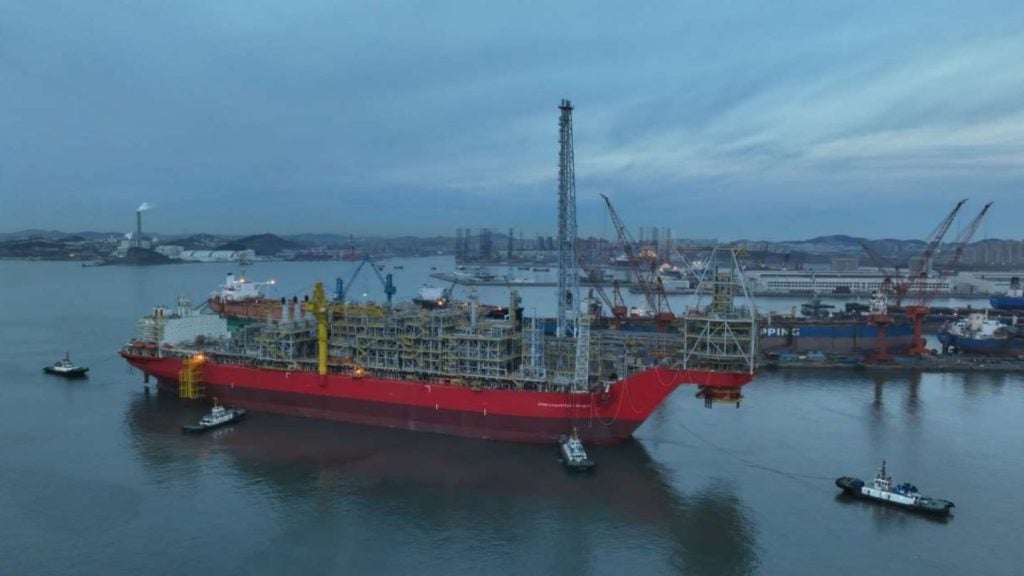The Atlantis platform was the deepest-moored floating dual oil and gas production facility in the world at the time of its installation. Its record was broken by the Independence semisubmersible hub, which weighed 58,700 tons (t).
BP is the operator of the Atlantis field with 56% ownership interest while the remaining 44% is owned by Woodside through its merger with BHP Petroleum in June 2022.
The platform is located 240km south of New Orleans in 7,074ft of water. The field itself occupies five blocks, including Green Canyon 699, 700, 742, 743 and 744 with water depths ranging between 4,400ft and 7,100ft.
The oil and gas platform was originally scheduled to begin operations in 2006. However, hurricanes in 2005 delayed progress and increased prices. Atlantis finally produced its first oil in October 2007, with full commissioning and a ramp-up in production in mid-December.
Initially producing at a daily rate of around 10,000 barrels of oil, Atlantis reached its production peak by the end of 2008. It currently has a production capacity of 200,000 barrels of oil and 180 million cubic feet of gas a day.
In January 2019, BP announced plans for the $1.3bn Atlantis phase three expansion. The expansion comes after breakthroughs in advanced seismic imaging techniques, which led to the discovery of an additional 400 million barrels of oil at the Atlantis field. The project was commissioned in August 2020 and increased production at the platform by 36,000 barrels of oil equivalent per day (boepd).
Atlantis deepwater platform production and development
The Atlantis platform employs an integrated semisubmersible design, with the production quarters platform supported by a separate dedicated mobile offshore drilling unit.
In addition to the semisubmersible platform, the field development uses a network of wet-tree subsea wells, with the potential for more than 18 to be tied back to Atlantis. The development drilling and well completion involved Global Santa Fe’s submersible rig, Development Driller II, and a long-term development unit.
The transportation of oil and gas to an existing shelf and onshore interconnections uses the Caesar and Cleopatra pipelines respectively, which form part of one of the largest-capacity deepwater lines in the Mardi Gras transportation system that is 65% BP-owned. BHP Billiton has a 25% equity share in the component Caesar pipeline and a 22% stake in Cleopatra.
Crude from Atlantis is transported to the Ship Shoal 332B platform, from which multiple pipeline connections allow it to reach major US markets and interconnections. Natural gas is channelled along Cleopatra to the Ship Shoal 332A platform, where it connects with the Manta Ray gathering system, before being transported to Louisiana along with the Nautilus gas transportation system.
Topsides and hull
The topsides layout consists of three production/utilities modules, amounting to a lift weight of 14,125t. The finished installation has a main power generation capability of 63MW.
With the main deck of 403ft by 294ft, the hull has a displacement of 88,826t, a normal draft of 85ft and four columns of 67ft by 67ft in height. Mooring is achieved via a hydraulic linear chain jack mooring system using 12in by 5.75in wire rope and chain with a suction pile.
The production quarters were moored at their permanent location in August 2006.
Future of Atlantis
BP’s plans to increase its production in the Gulf of Mexico to 400,000boepd, by mid-2025. Future projects are expected to further strengthen the company’s operations in the Gulf of Mexico. These include phase four and five of the Atlantis field and expansion and tiebacks at the Thunder Horse, Mad Dog, and Na Kika fields.
A total of 12 additional producing wells and six additional water-injection wells utilising existing infrastructure are also planned to be developed as part of future infill campaigns at Atlantis.
A major expansion of the facilities is also being planned that will consist of topside modification, subsea multiphase pumping, and upgrades to water injection and water handling facilities.
Contractors involved
The platform hull was built in Okpo, South Korea and the topsides modules were fabricated by Ray McDermott in Morgan City, Louisiana, US. Their subsequent integration took place at Ingleside, Texas.
Duffy & McGovern supplied the accommodation, including sleeping and office modules, laundry facilities, recreation areas and galleys, with associated sewage and freshwater tanks.
Permanent mooring piles were installed at a depth of 2,134m by Heerema Marine.
Project Consulting Services, an engineering company, provided engineering and project services along with inspection, construction management, materials management, and project scheduling and management services for the subsea production field flow line system of the project.
In October 2011, EMAS AMC was contracted to install and replace subsea systems, including manifolds, pipeline end manifolds, jumpers, and associated equipment at the Atlantis field.
TechnipFMC, an oil and gas technology provider, was awarded an engineering, procurement, construction, and installation contract for the Atlantis phase three project in January 2019.











